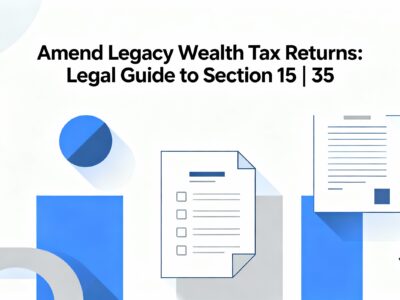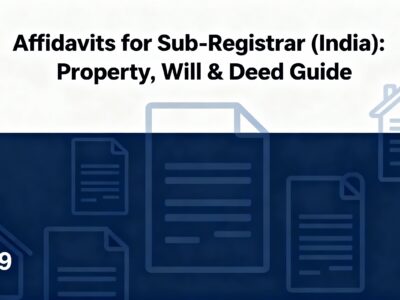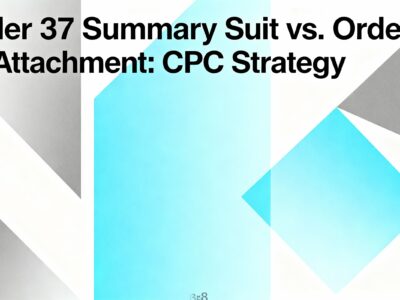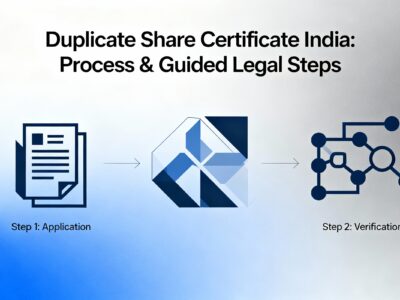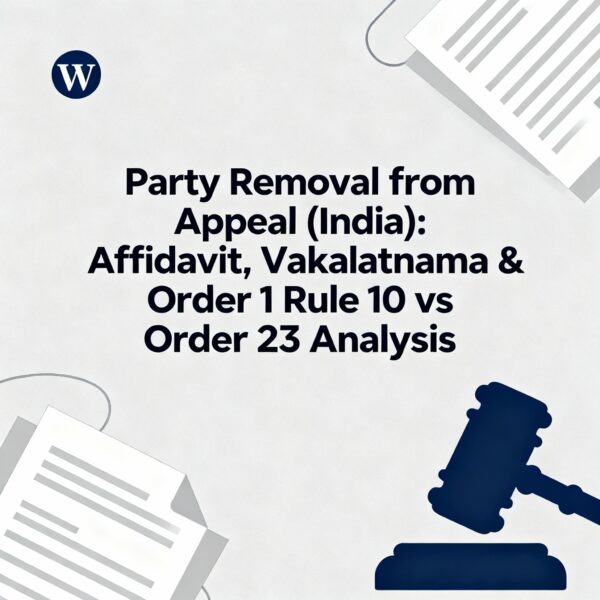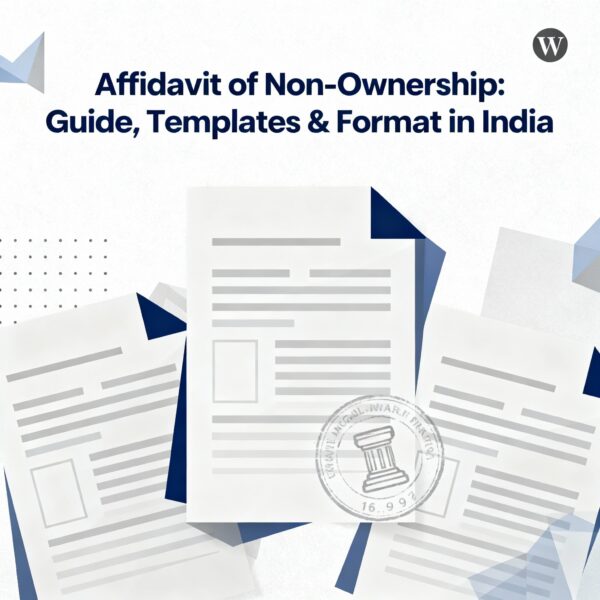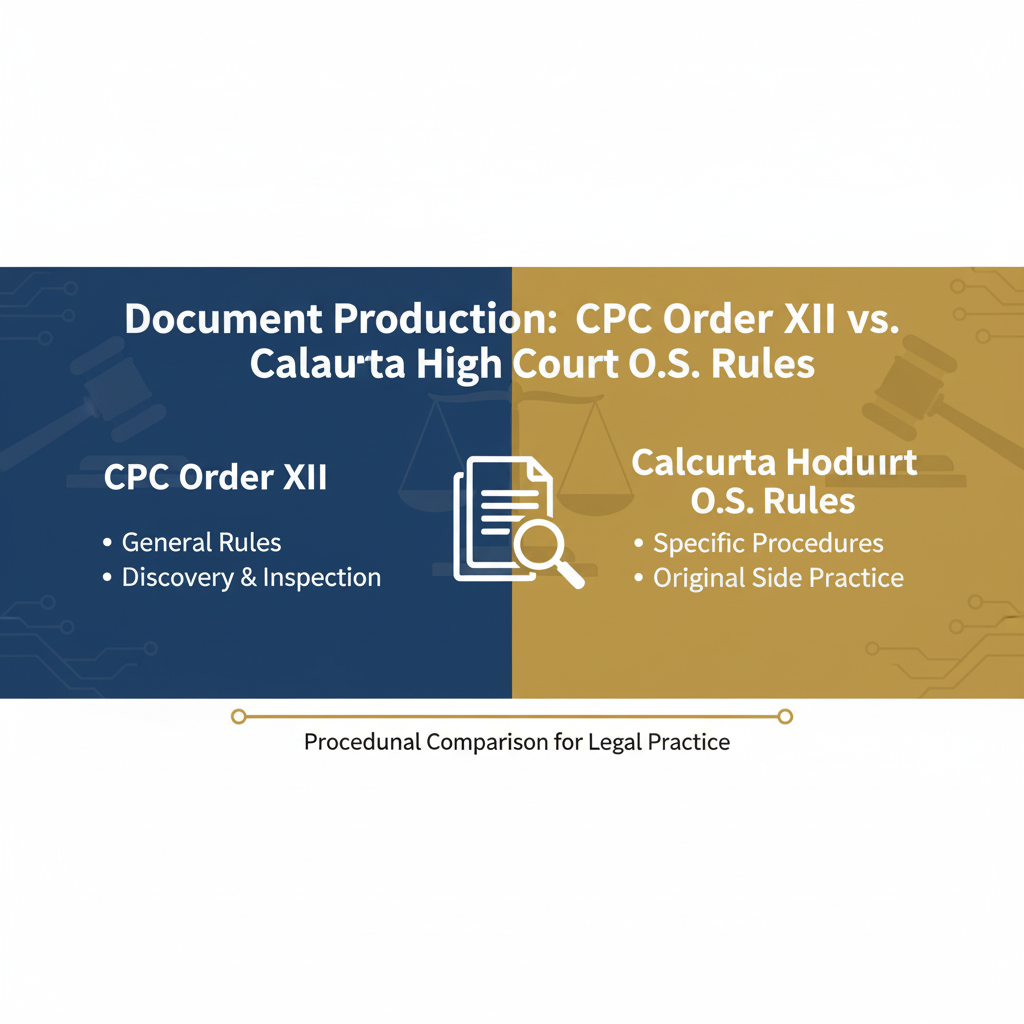Master DRT Set-Off Claims: Guide to Replies Under RDDBFI Act, 1993
Navigating a set-off claim within the Debts Recovery Tribunal (DRT) requires a precise and strategic approach. This comprehensive guide, updated for October 2025, provides an exhaustive breakdown of how to draft and file a robust reply to set-off and counterclaim actions under Section 19 of the RDDBFI Act, 1993.
From understanding the core legal architecture—including the crucial concepts of an “ascertained sum” and “legally recoverable” debt—to advanced modules on cross-examination, leveraging precedent, and e-filing protocols, this resource is designed for banking professionals and legal practitioners seeking to protect their claims and streamline recovery proceedings effectively. Explore annotated templates, procedural checklists, and strategic insights to master every stage of the process.
Evaakil.com
LEGAL RESEARCH & DRAFTING GUIDE
Annotated Template for Replying to Set-Off Claims in DRT Proceedings
A strategic guide for banking professionals and lawyers on structuring a robust reply to set-off and counterclaim actions under the RDDBFI Act, 1993.
Section 1: The Legal Architecture of Set-Off Claims
In the context of the Debts Recovery Tribunal (DRT), a set-off is a statutory right available to the defendant to adjust a debt owed to them by the applicant bank against the debt they owe. This is governed by Section 19 of the Recovery of Debts Due to Banks and Financial Institutions (RDDBFI) Act, 1993. Understanding the two core requirements is the first step in dismantling the defendant's claim.
1. Ascertained Sum of Money
The defendant's claim must be for a specific, calculated amount. It cannot be a vague claim for damages or losses. For instance, a claim for "losses due to mental agony" is not an ascertained sum, whereas a claim for "Rs. 5,00,000 wrongly debited from account" is.
2. Legally Recoverable
The sum claimed by the defendant must be legally enforceable. This means it should not be barred by any law, most commonly the Law of Limitation. If the defendant's claim is from an event that occurred more than three years ago, it is likely time-barred and cannot be set off.
Section 2: Drafting Strategy and Core Arguments
The reply to a set-off claim should be structured as a formal pleading, supported by an affidavit. The strategy is to attack the claim on preliminary legal grounds before addressing the factual allegations.
Chart: Relative weightage of common arguments against set-off claims.
Section 3: Annotated Template Breakdown
This section deconstructs the key parts of the affidavit filed in support of the reply. Each component has a distinct legal purpose.
BEFORE THE HON'BLE DEBTS RECOVERY TRIBUNAL, [CITY]
ORIGINAL APPLICATION (O.A.) NO. ______ OF 20__
IN THE MATTER OF:
[APPLICANT BANK NAME & ADDRESS]
Applicant
VERSUS
[DEFENDANT(S) NAME & ADDRESS]
Defendant(s)
AFFIDAVIT ON BEHALF OF THE APPLICANT3.1. Formal Elements (Heading)
The "cause title" must be identical to the main Original Application (O.A.). Accuracy is paramount to ensure the document is correctly filed and indexed with the case records.
1. That I am the [Designation] of the Applicant Bank. I am well conversant with the facts of the case based on my perusal of the records, and as such, I am competent and duly authorized to swear and depose this affidavit. A true copy of the Power of Attorney/Board Resolution is annexed hereto.3.2. Deponent's Authorization
This paragraph establishes the deponent's legal standing to represent the bank. It's crucial to annex the Power of Attorney or Board Resolution authorizing the officer to depose on the bank's behalf.
a) That I state that the alleged claim is not for an "ascertained sum of money." The claim is in the nature of speculative and unliquidated damages.
b) That I state that the alleged claim is hopelessly barred by limitation and is therefore not "legally recoverable."3.3. Body: Preliminary Objections
These are your knockout punches. Before getting into the story, you attack the legal foundation of the set-off claim. If the claim is for an unliquidated amount or is time-barred, it can be dismissed at the outset.
VERIFICATION
Verified at [Place] on this day of [Month], 20__, that the contents of the above affidavit are true and correct to my personal knowledge and based on information derived from the official records. No part of it is false, and nothing material has been concealed therefrom.3.4. Verification
The verification clause is a solemn statement affirming the truthfulness of the affidavit's contents, making the deponent liable for perjury if found to be false. It must be signed by the deponent.
Section 4: Procedural Aspects & Post-Filing
Filing the reply is not the end. The procedural journey involves several stages where the arguments in your reply will be tested.
Filing of Reply
The reply and supporting affidavit are filed in the DRT registry within the stipulated time.
Framing of Issues
The Tribunal identifies the key points of dispute, including the validity of the set-off claim.
Evidence Stage
The affidavit serves as the bank's primary evidence. The deponent may be cross-examined.
Final Arguments & Judgment
Arguments are made based on pleadings and evidence, leading to the final order on both the main claim and the set-off.
Strategic Consideration
The affidavit filed in support of the reply often serves as the petitioner's evidence-in-chief. The deponent can be cross-examined. Therefore, select an officer who is not just a signatory but is thoroughly familiar with the case and can credibly defend the bank's position under pressure.
Section 5: Downloadable Legal Format with Translations
Below is a complete legal template for the affidavit. Use the tabs to view the format in different languages. While the English version is legally vetted, the translations are provided for structural guidance and should be reviewed by a qualified professional for accuracy and context in regional courts.
BEFORE THE HON'BLE DEBTS RECOVERY TRIBUNAL, [CITY]
O.A. NO. ______ OF 20__
IN THE MATTER OF:
[APPLICANT BANK NAME & ADDRESS]
... Applicant
VERSUS
[DEFENDANT(S) NAME & ADDRESS]
... Defendant(s)
AFFIDAVIT FILED ON BEHALF OF THE APPLICANT IN REPLY TO THE SET-OFF CLAIM FILED BY THE DEFENDANT(S) UNDER SECTION 19(6) OF THE RECOVERY OF DEBTS AND BANKRUPTCY ACT, 1993
I, [Deponent's Name], son/daughter of [Father's Name], aged about [Age] years, residing at [Address], and currently working as [Designation] at the Applicant Bank, do hereby solemnly affirm and state as under:
1. That I am the [Designation] of the Applicant Bank and the deponent herein. I am well conversant with the facts and circumstances of the present case based on my perusal of the official records maintained by the Applicant Bank. I am competent and duly authorized to swear and depose this affidavit on behalf of the Applicant.
2. That the Applicant has filed the captioned Original Application (O.A.) for the recovery of a debt of Rs. [Amount], which is due and payable by the Defendant(s). The contents of the O.A. are not repeated herein for the sake of brevity but are reiterated and shall be read as an integral part of this affidavit.
3. That in response to the summons, the Defendant(s) has filed a Written Statement which includes a purported claim of set-off under Section 19(6) of the Act. This affidavit is being filed to reply to the said claim of set-off.
PRELIMINARY OBJECTIONS:
4. That the purported claim of set-off is not maintainable as it is not for an "ascertained sum of money." The claim is based on speculative and unliquidated damages, which falls outside the scope of Section 19(6).
5. That the alleged claim is hopelessly barred by the law of limitation and is therefore not "legally recoverable" from the Applicant Bank.
REPLY ON MERITS:
6. [Para-wise reply to the factual assertions made in the set-off claim, with specific denials and counter-statements.]
PRAYER:
It is, therefore, most respectfully prayed that this Hon'ble Tribunal may be pleased to:
a) Dismiss the claim of set-off filed by the Defendant(s) with exemplary costs.
b) Pass such other and further orders as may be deemed fit and proper in the facts and circumstances of the case.
DEPONENT
VERIFICATION
Verified at [Place] on this [Day] day of [Month], 20__, that the contents of the above affidavit from paragraphs 1 to [last paragraph] are true and correct to my personal knowledge and based on information derived from the official records maintained by the Applicant Bank. No part of it is false, and nothing material has been concealed therefrom.
DEPONENT
[माननीय ऋण वसूली न्यायाधिकरण, [शहर] के समक्ष हिंदी में शपथ पत्र का प्रारूप]
[यहां अंग्रेजी प्रारूप के अनुसार सभी शीर्षक, पैराग्राफ और सत्यापन शामिल होंगे, लेकिन हिंदी में अनुवादित।]
विषय: प्रतिवादी द्वारा दायर सेट-ऑफ दावे के जवाब में आवेदक की ओर से शपथ पत्र।
1. शपथकर्ता का परिचय।
2. मूल आवेदन का संदर्भ।
3. प्रारंभिक आपत्तियां (उदाहरण: दावा निर्धारित राशि के लिए नहीं है, समय-बाधित है)।
4. योग्यता के आधार पर उत्तर।
5. प्रार्थना।
6. सत्यापन।
(नोट: यह केवल एक संरचनात्मक मार्गदर्शिका है। सटीक कानूनी अनुवाद के लिए एक पेशेवर से परामर्श करें।)
[মাননীয় ঋণ পুনরুদ্ধার ট্রাইব্যুনাল, [শহর]-এর সামনে বাংলায় হলফনামার বিন্যাস]
[এখানে ইংরেজি বিন্যাস অনুযায়ী সমস্ত শিরোনাম, অনুচ্ছেদ এবং যাচাইকরণ অন্তর্ভুক্ত থাকবে, তবে বাংলায় অনূদিত হবে।]
বিষয়: প্রতিবাদীর দায়ের করা সেট-অফ দাবির জবাবে আবেদনকারীর পক্ষে হলফনামা।
১. হলফকারীর পরিচয়।
২. মূল আবেদনের রেফারেন্স।
৩. প্রাথমিক আপত্তি (উদাহরণস্বরূপ: দাবিটি একটি নির্দিষ্ট অর্থের জন্য নয়, সময়সীমা দ্বারা বাধাপ্রাপ্ত)।
৪. যোগ্যতার ভিত্তিতে উত্তর।
৫. প্রার্থনা।
৬. যাচাইকরণ।
(দ্রষ্টব্য: এটি শুধুমাত্র একটি কাঠামোগত নির্দেশিকা। সঠিক আইনি অনুবাদের জন্য একজন পেশাদারের সাথে পরামর্শ করুন।)
[மாண்புமிகு கடன்கள் மீட்பு தீர்ப்பாயம், [நகரம்] முன் தமிழில் பிரமாணப் பத்திரத்தின் வடிவம்]
[இங்கே ஆங்கில வடிவத்தின்படி அனைத்து தலைப்புகள், பத்திகள் மற்றும் சரிபார்ப்பு சேர்க்கப்படும், ஆனால் தமிழில் மொழிபெயர்க்கப்படும்।]
பொருள்: பிரதிவாதி தாக்கல் செய்த செட்-ஆஃப் உரிமை கோரலுக்கு பதிலளிக்கும் வகையில் விண்ணப்பதாரர் சார்பாக பிரமாணப் பத்திரம்.
1. வாக்குமூலம் அளிப்பவரின் அறிமுகம்.
2. அசல் விண்ணப்பத்தின் குறிப்பு.
3. பூர்வாங்க ஆட்சேபனைகள் (உதாரணம்: கோரிக்கை ஒரு குறிப்பிட்ட தொகைக்கு அல்ல, காலாவதியானது).
4. தகுதியின் அடிப்படையில் பதில்.
5. பிரார்த்தனை.
6. சரிபார்ப்பு.
(குறிப்பு: இது ஒரு கட்டமைப்பு வழிகாட்டி மட்டுமே. துல்லியமான சட்ட மொழிபெயர்ப்புக்கு ஒரு நிபுணரை அணுகவும்.)
[గౌరవనీయ రుణాల రికవరీ ట్రిబ్యునల్, [నగరం] ముందు తెలుగులో అఫిడవిట్ ఫార్మాట్]
[ఇక్కడ ఆంగ్ల ఫార్మాట్ ప్రకారం అన్ని శీర్షికలు, పేరాలు మరియు ధృవీకరణ చేర్చబడతాయి, కానీ తెలుగులో అనువదించబడతాయి।]
విషయం: ప్రతివాది దాఖలు చేసిన సెట్-ఆఫ్ క్లెయిమ్కు సమాధానంగా దరఖాస్తుదారు తరపున అఫిడవిట్.
1. అఫిడవిట్ ఇచ్చే వ్యక్తి పరిచయం.
2. అసలు దరఖాస్తు యొక్క సూచన.
3. ప్రాథమిక అభ్యంతరాలు (ఉదాహరణ: క్లెయిమ్ ఒక నిర్దిష్ట మొత్తం కోసం కాదు, కాలం చెల్లినది).
4. యోగ్యతపై సమాధానం.
5. ప్రార్థన.
6. ధృవీకరణ.
(గమనిక: ఇది కేవలం ఒక నిర్మాణాత్మక మార్గదర్శి మాత్రమే. సరైన చట్టపరమైన అనువాదం కోసం ఒక నిపుణుడిని సంప్రదించండి.)
Section 6: Advanced Modules & In-Depth Analysis
Go beyond the basics with these deep-dive modules designed to provide a strategic edge in DRT litigation. This section covers critical sub-topics, from witness preparation to the strategic use of case law.
Module 1: Cross-Examination of the Deponent
The bank officer who signs the affidavit is not merely a signatory; they are a witness. Their cross-examination can make or break the case. Preparation is non-negotiable.
Key Preparation Points:
- Master the Pleadings: The witness must know the O.A., the reply, and the affidavit inside-out.
- Documentary Familiarity: Must be able to identify and explain every document filed in support.
- Anticipate Weaknesses: Rehearse answers for potential vulnerabilities in the bank's case.
- Maintain Composure: The opposing counsel's goal is to provoke. Stay calm and professional.
Potential Lines of Questioning:
- Questions on personal knowledge vs. record-based knowledge.
- Challenges to the authorization (Power of Attorney).
- Discrepancies between the statement of accounts and other documents.
- Probing the bank's internal procedures and any alleged lapses.
Module 2: Leveraging Case Law & Precedent
A well-drafted reply is powerful, but a reply supported by binding precedent is formidable. Citing relevant judgments from the Supreme Court and High Courts adds significant weight to your arguments.
How to Use Precedent Effectively:
- Identify the Core Legal Issue: Is the set-off claim about limitation, an unascertained sum, or another legal principle?
- Research Authoritative Rulings: Use legal databases to find judgments that support your specific objection.
- Cite Appropriately: Mention the case name, citation, and the relevant paragraph (para) that contains the ruling principle.
- Distinguish Unfavorable Rulings: If the defendant cites a case, be prepared to argue why the facts of that case are different from yours.
Module 3: Court Fees on Set-Off & Counterclaim
A critical procedural point: A set-off or counterclaim is treated as a plaint in a cross-suit. The defendant must pay the requisite court fees on the amount they claim. Failure to do so is a strong preliminary objection.
The court fees are calculated based on the value of the set-off/counterclaim as per the relevant state court fees act or the rules of the tribunal. An objection that the defendant has not paid the appropriate ad valorem court fees on their claim can lead to the rejection of the set-off claim itself.
Frequently Asked Questions (FAQ)
What is the deadline for filing a reply to a set-off claim?
The Tribunal directs the timeline for filing replies. Typically, it is within 15-30 days from the date the Written Statement (containing the set-off claim) is served. It's crucial to adhere to this timeline or file an application for condonation of delay if necessary.
Can we introduce new documents with the reply affidavit?
Generally, all documents should be filed with the Original Application. However, if a document is specifically required to rebut a point raised in the set-off claim, you can file an application (Interlocutory Application - I.A.) seeking leave of the Tribunal to bring the new document on record.
What if the defendant's set-off claim is higher than the bank's claim?
If the defendant's counterclaim is for a larger amount and they succeed, the Tribunal has the power to pass a decree for the excess amount in favor of the defendant. This underscores the importance of vigorously defending against such claims. The defendant must pay court fees on the entire amount of their counterclaim.
Section 7: Digital Evidence and E-Filing Protocol
In modern banking litigation, most evidence is electronic. Understanding the rules for admissibility and the procedures for e-filing is critical for a smooth and effective litigation process.
Admissibility of Electronic Records
Bank statements, email correspondence, and loan account details are electronic records. To be admissible as evidence, they must be accompanied by a certificate under Section 65B of the Indian Evidence Act, 1872.
The Section 65B Certificate Must State:
- The electronic record was produced by a computer that was used regularly to store or process such information.
- The information was regularly fed into the computer in the ordinary course of activities.
- The computer was operating properly during the period in question.
- The certificate is signed by a person occupying a responsible official position in relation to the operation of the relevant device.
DRT E-Filing Procedure
Most DRTs have transitioned to an online filing system. Counsel for the bank must register on the portal and follow the SOP for uploading pleadings and documents, ensuring all files are in the prescribed format (usually PDF) and correctly paginated.
Section 8: Settlement Strategies & Lok Adalat
Litigation is not the only path to recovery. Exploring settlement avenues can often lead to a faster resolution, saving time and resources for the bank.
One-Time Settlement (OTS)
The bank may offer a One-Time Settlement scheme, allowing the borrower to pay a reduced, consolidated amount to close the loan account. This is a commercial decision based on the age of the debt and the perceived difficulty of recovery.
Lok Adalat
DRTs frequently hold Lok Adalats, which are alternative dispute resolution forums. A settlement reached here results in an award that has the same force as a decree of the Tribunal. It is a non-adversarial process aimed at amicable resolution.
Section 9: Post-Decree: The Execution Process
Obtaining a Recovery Certificate (the "decree") from the DRT is a major victory, but the final step is to execute it. This process is handled by the Recovery Officer attached to the DRT.
Tribunal issues Recovery Certificate (RC) and sends it to the Recovery Officer (RO).
RO issues a demand notice to the Certificate Debtor (the borrower).
If payment is not made, the RO proceeds with attachment of assets (movable and immovable).
Attached assets are sold via public auction to recover the decretal amount.
Section 10: Final Pre-Filing Checklist
Before submitting your reply to the Tribunal, run through this final checklist to ensure all bases are covered.
- Cause Title Check: Does the heading exactly match the Original Application?
- Authorization Annexed: Is the Power of Attorney / Board Resolution attached to the affidavit?
- Preliminary Objections: Have the core legal objections (limitation, unascertained sum, court fees) been clearly stated upfront?
- Para-wise Reply: Have all factual allegations in the set-off claim been specifically denied or explained? Avoid vague denials.
- Affidavit Verification: Has the deponent signed the affidavit and the verification clause?
- Pagination and Copies: Is the entire set correctly paginated and are there sufficient copies for the Tribunal and all parties?



